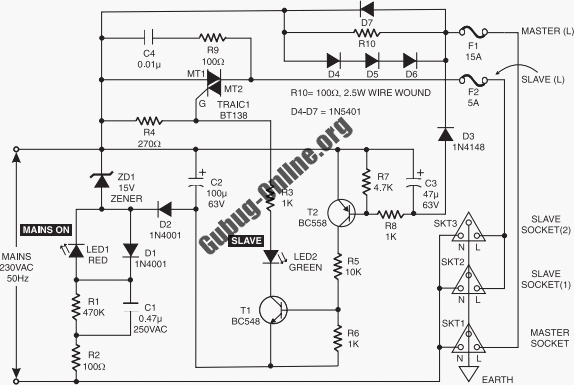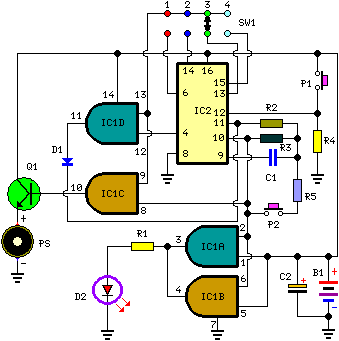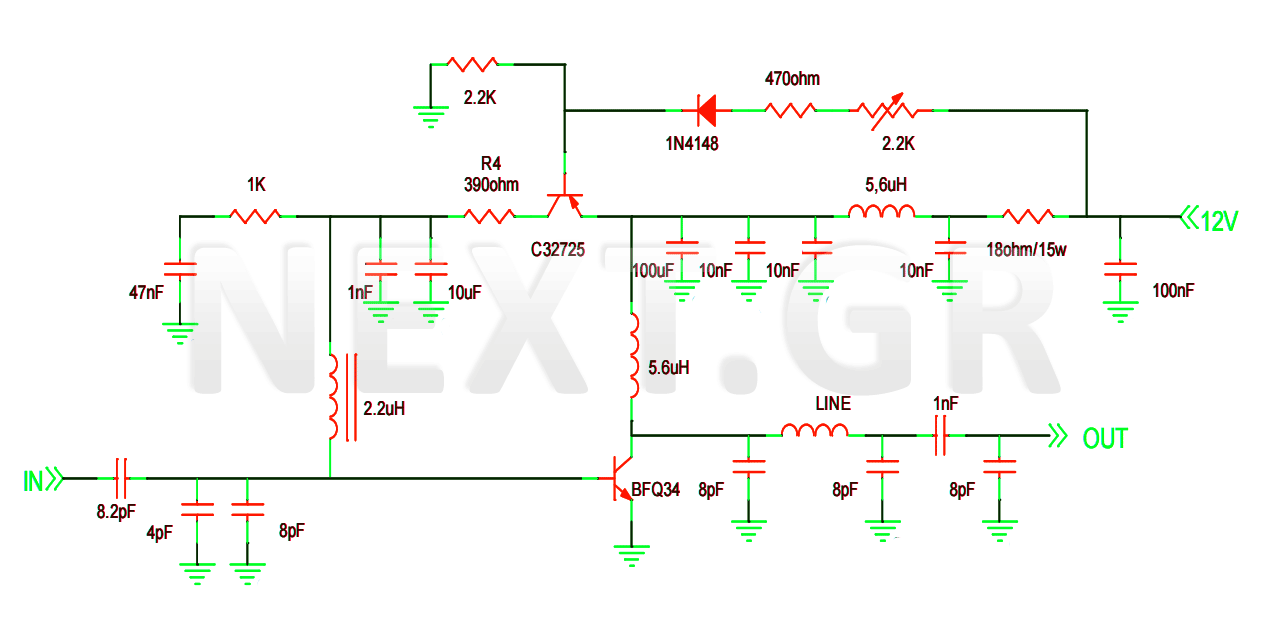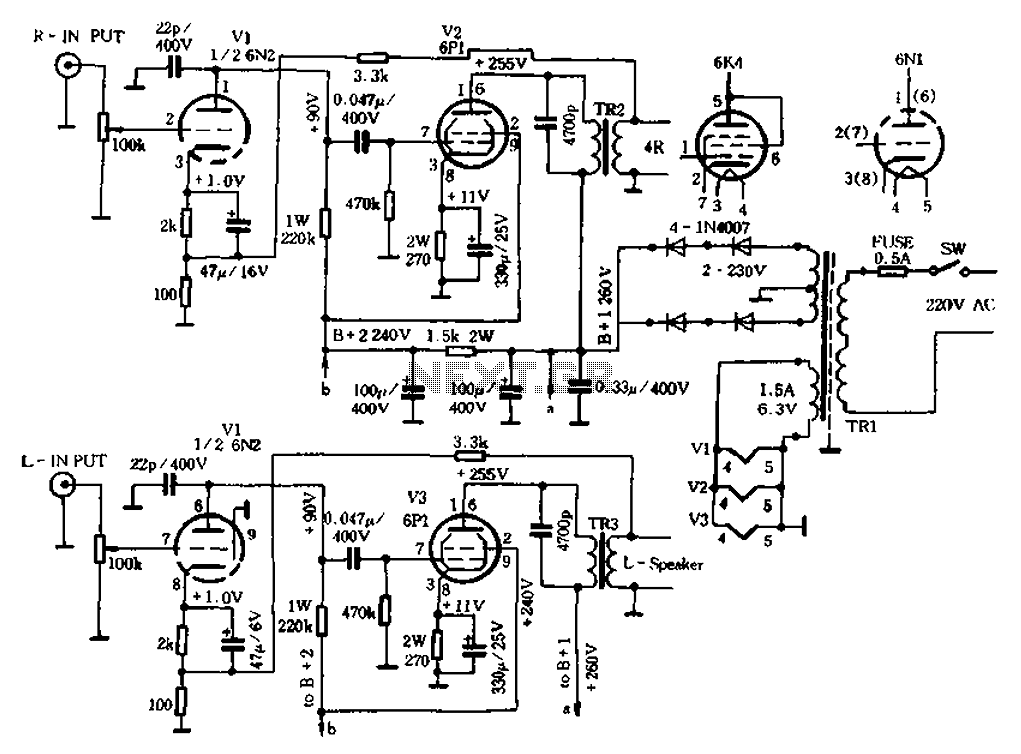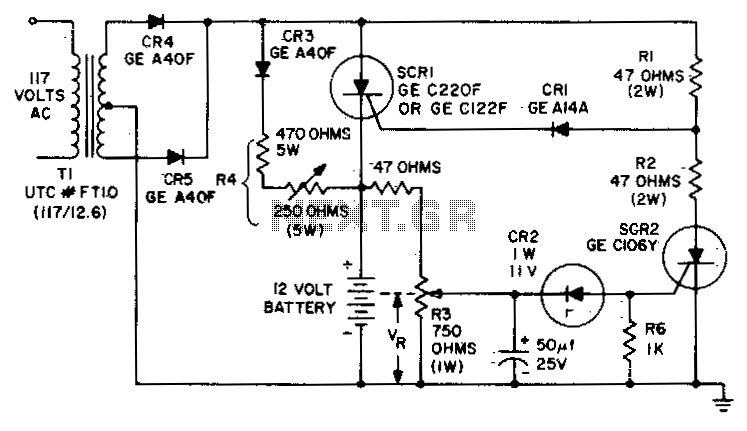
amplifier audio small to use with 9v battery operated
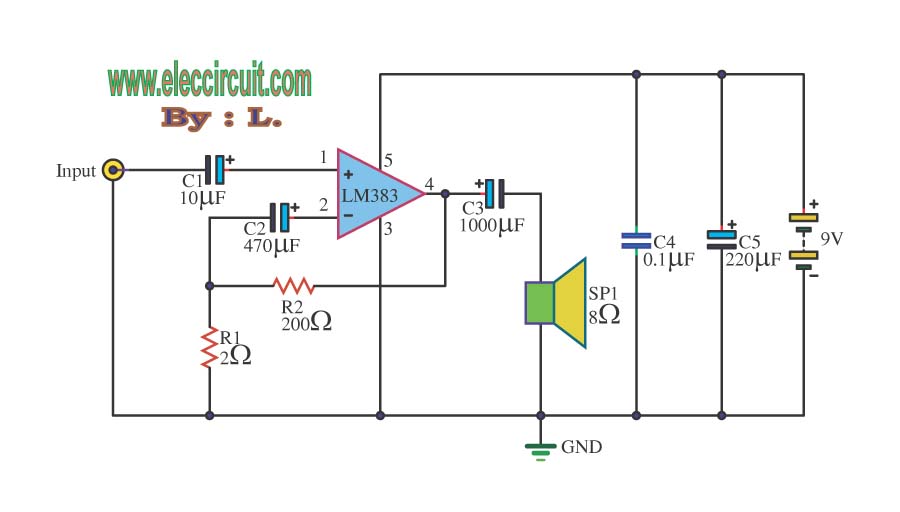
The circuit operates with a 9-volt power supply using the LM386 amplifier IC, which has a power output range of 300-800 mW, depending on the supply voltage, which can vary from 4 to 15 volts. The input signal is connected to pin 3, the non-inverting input of the amplifier. Capacitor C1 is used to filter out noise, connecting to ground. Capacitor C2 enhances the gain of the amplifier, although excessive capacitance (above 100uF) can introduce distortion. The output from IC1 is available at pin 5, where capacitor C4 couples the audio signals while blocking DC voltage to prevent it from reaching the speaker. The audio feedback is routed through resistor R2 and capacitor C3 to improve high-frequency response. The LM386 IC is favored for its simplicity and minimal component requirements, making it ideal for small-scale applications or experiments. It operates effectively with a supply voltage range of 4V to 12V and draws a low current of only 50 mA. The frequency response spans from 40 Hz to 100 kHz with a gain of 46 dB and minimal distortion. An LED (LED1) indicates the operational status of the circuit when powered. Capacitors C6 and C7 serve as filters to smooth the input audio signal. Capacitor C1 protects the circuit from DC voltage noise, while variable resistor VR1 adjusts the audio signal level before it is sent to pin 3 of IC1. The output is boosted at pin 5 through capacitor C5, which also protects against DC voltage, improving low-frequency response before the signal is directed to the speaker. Capacitors C4 and resistor R1 work together to eliminate noise from the output signal. A jumper at pin 1 of the IC allows for access to C3, which can be used to enhance the gain further when the circuit is required to amplify weak signals.
The LM386 amplifier circuit is designed for straightforward implementation in audio applications, particularly where space and component count are critical. The circuit's architecture facilitates a robust audio amplification solution with built-in noise reduction and frequency response enhancement features. The use of capacitors for coupling and filtering ensures that only the desired audio frequencies are amplified, while DC components are effectively blocked. The variable resistor VR1 allows for user-friendly control of the output level, making this circuit adaptable for various audio sources.
The configuration of the LM386 in this circuit supports a variety of audio projects, from simple amplifiers to more complex audio processing systems. The feedback loop created by R2 and C3 is crucial for maintaining audio fidelity, particularly at higher frequencies, which is often a challenge in audio amplification. Additionally, the circuit's low power consumption makes it suitable for battery-operated devices, enhancing its versatility in portable applications.
The overall design is conducive to educational purposes, allowing students and hobbyists to explore audio amplification principles without the complexity of more advanced circuits. The LM386's established reputation in the electronics community further underscores the reliability and effectiveness of this circuit for both learning and practical applications in audio engineering.When entering the power supply 9-volt circuit IC1 number LM386 amplifier IC size is 300-800 mW, Depending on the power supply circuit with, This is from 4-15 volts. Once entered into the input pin 3, The non inverting pin to amplifier non-return phase. C1 will be served cut out the noise input to ground. And C2 increases the rate of amplifier, C2 is to add more value. But if the C2 Too much distortion (the C2 should not exceed 100uF). The output of IC1 is out of the pin 5 through C4 coupling audio signals to better and DC block and not passed to the speaker. For the audio portion will also be fed back through R2 and C3 to the high frequency response better. This circuit number LM386 IC is used as the IC, which is popular is that it has. It is a simple circuit. Less equipment items. Suitable for use or used in small trials. The properties of the IC can be used from 4V-12V power supply for low current at 50 mA only. And the frequency response from 40Hz 100 kHz rate of expansion of 46 dB and distortion. When entering the power supply light LED1 circuit to tell the operating environment of the circuit. C6 and C7, with a page filter to smooth then be entered through one input sound signal. C1 coupling signal protection dc voltage noise in circuit to the sound signal that is transmitted through VR1 for controller level reputation of sound signal and then sent to the input to pin 3 of IC1.
boost up output at pin 5 through C5 for protection dc voltage and meet the low frequency better and send out put speakers. The C4 and R1 is acting eliminate noise signal out and the pin 1 of IC will have a jumper for. to access the C3 to boost up rate increase in case the circuit to be used to boost up signal is very small.
🔗 External reference
The LM386 amplifier circuit is designed for straightforward implementation in audio applications, particularly where space and component count are critical. The circuit's architecture facilitates a robust audio amplification solution with built-in noise reduction and frequency response enhancement features. The use of capacitors for coupling and filtering ensures that only the desired audio frequencies are amplified, while DC components are effectively blocked. The variable resistor VR1 allows for user-friendly control of the output level, making this circuit adaptable for various audio sources.
The configuration of the LM386 in this circuit supports a variety of audio projects, from simple amplifiers to more complex audio processing systems. The feedback loop created by R2 and C3 is crucial for maintaining audio fidelity, particularly at higher frequencies, which is often a challenge in audio amplification. Additionally, the circuit's low power consumption makes it suitable for battery-operated devices, enhancing its versatility in portable applications.
The overall design is conducive to educational purposes, allowing students and hobbyists to explore audio amplification principles without the complexity of more advanced circuits. The LM386's established reputation in the electronics community further underscores the reliability and effectiveness of this circuit for both learning and practical applications in audio engineering.When entering the power supply 9-volt circuit IC1 number LM386 amplifier IC size is 300-800 mW, Depending on the power supply circuit with, This is from 4-15 volts. Once entered into the input pin 3, The non inverting pin to amplifier non-return phase. C1 will be served cut out the noise input to ground. And C2 increases the rate of amplifier, C2 is to add more value. But if the C2 Too much distortion (the C2 should not exceed 100uF). The output of IC1 is out of the pin 5 through C4 coupling audio signals to better and DC block and not passed to the speaker. For the audio portion will also be fed back through R2 and C3 to the high frequency response better. This circuit number LM386 IC is used as the IC, which is popular is that it has. It is a simple circuit. Less equipment items. Suitable for use or used in small trials. The properties of the IC can be used from 4V-12V power supply for low current at 50 mA only. And the frequency response from 40Hz 100 kHz rate of expansion of 46 dB and distortion. When entering the power supply light LED1 circuit to tell the operating environment of the circuit. C6 and C7, with a page filter to smooth then be entered through one input sound signal. C1 coupling signal protection dc voltage noise in circuit to the sound signal that is transmitted through VR1 for controller level reputation of sound signal and then sent to the input to pin 3 of IC1.
boost up output at pin 5 through C5 for protection dc voltage and meet the low frequency better and send out put speakers. The C4 and R1 is acting eliminate noise signal out and the pin 1 of IC will have a jumper for. to access the C3 to boost up rate increase in case the circuit to be used to boost up signal is very small.
🔗 External reference
Warning: include(partials/cookie-banner.php): Failed to open stream: Permission denied in /var/www/html/nextgr/view-circuit.php on line 713
Warning: include(): Failed opening 'partials/cookie-banner.php' for inclusion (include_path='.:/usr/share/php') in /var/www/html/nextgr/view-circuit.php on line 713
